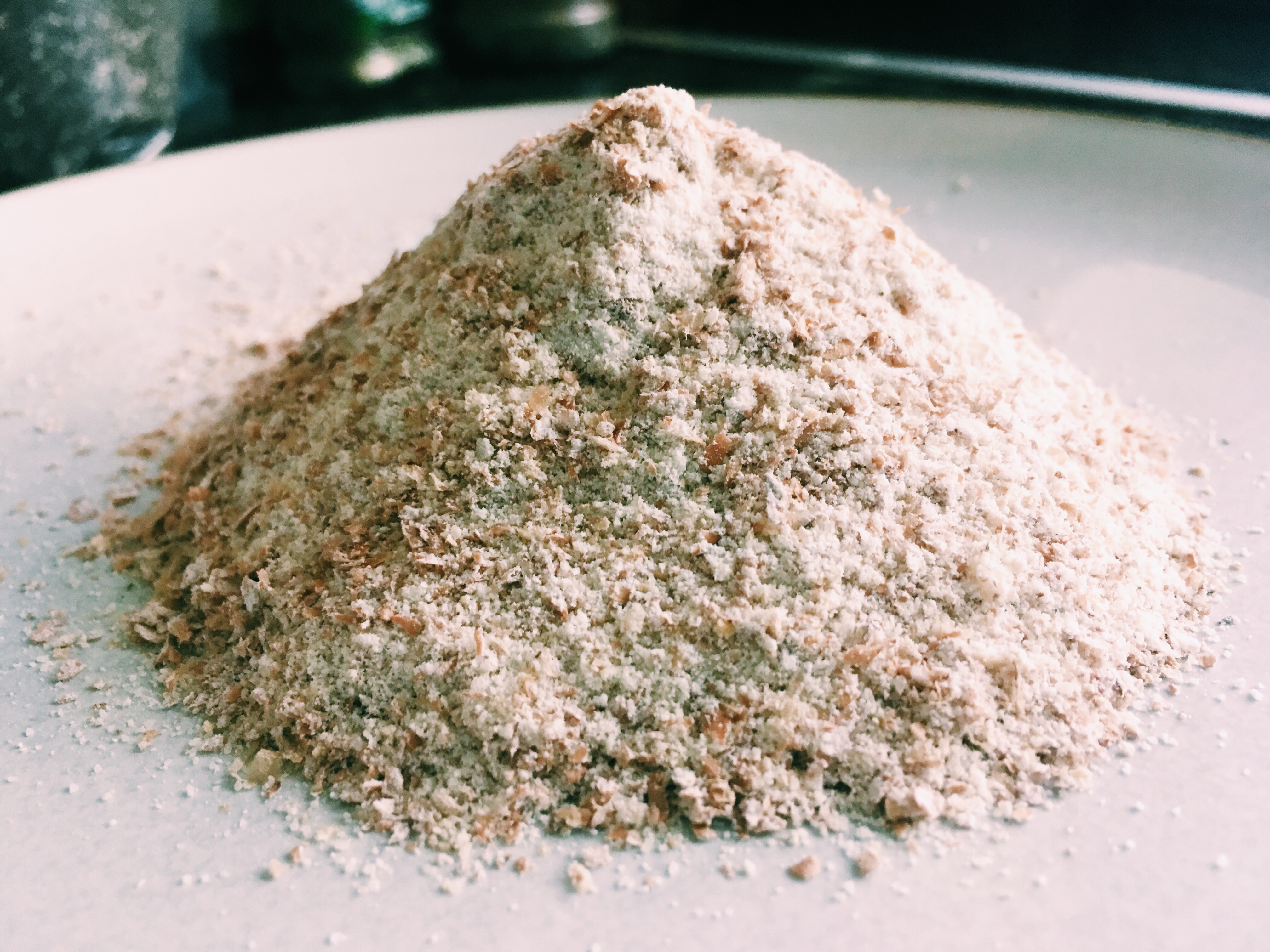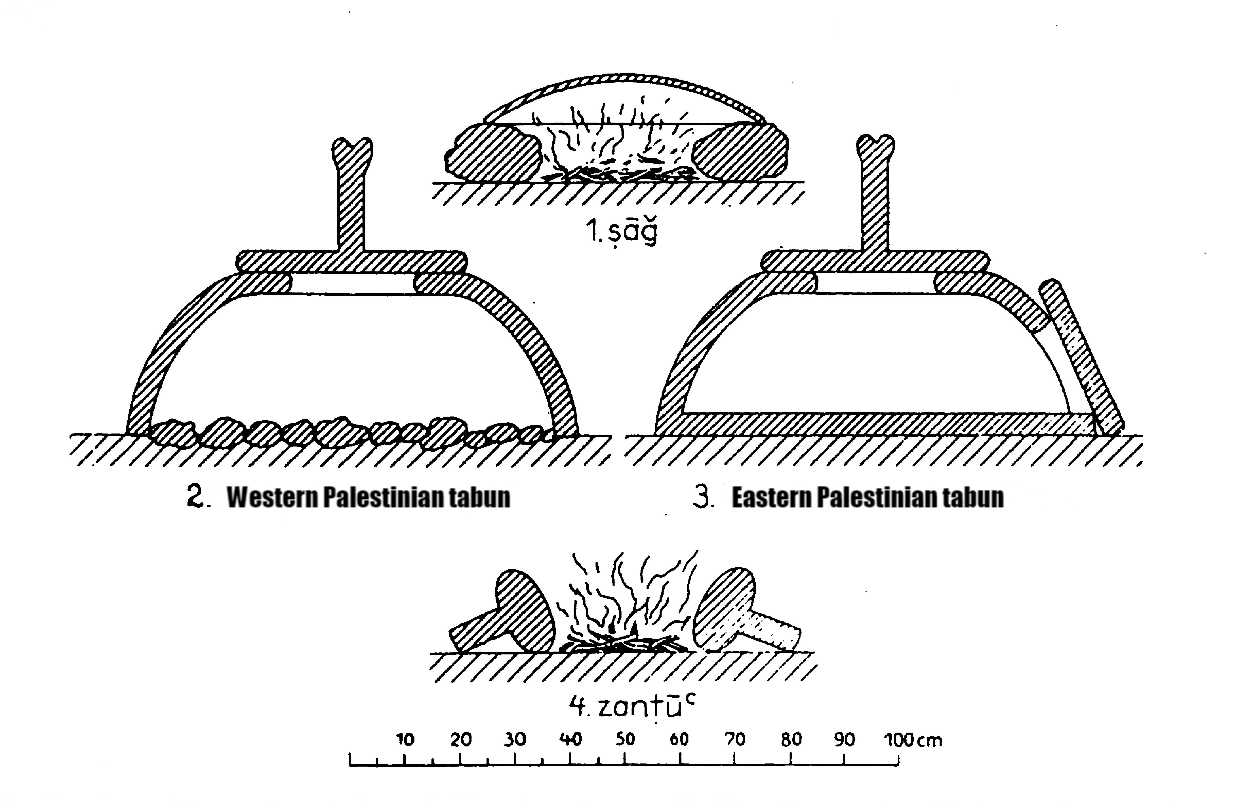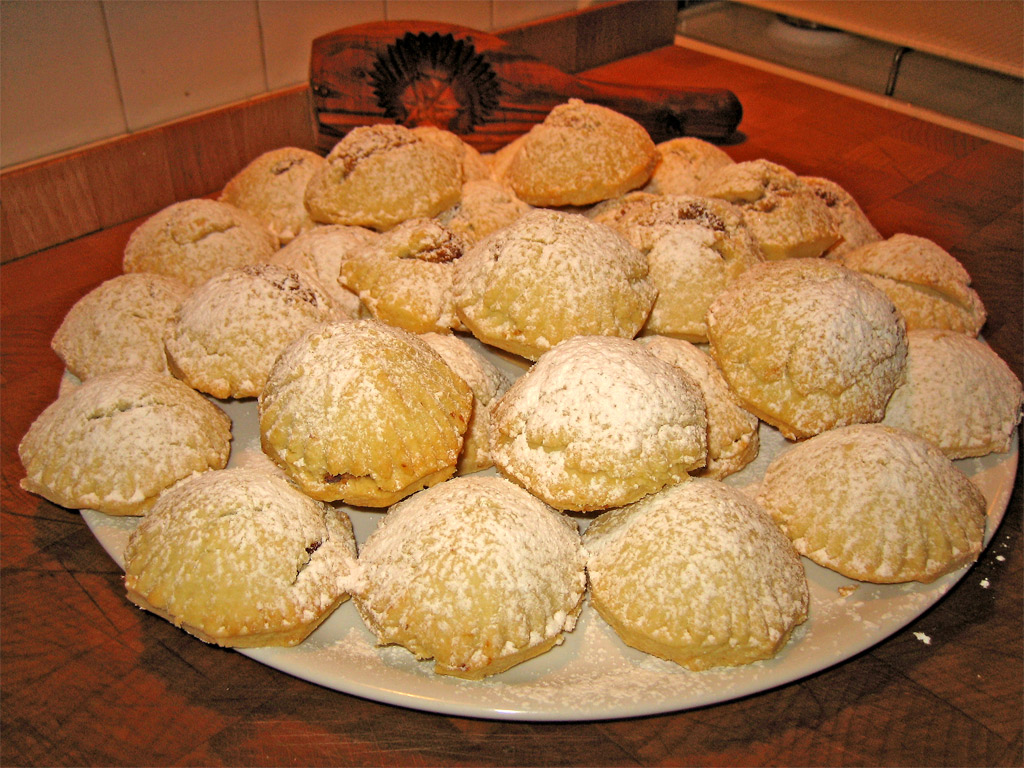|
Kaak (bread)
Kaak ( Balochi, Urdu, ) is a kind of bread and a native dish of Baloch and Pashtun peoples. Kaak is cooked on ghargi (steamed stone). In the past, Kaak was a tradition in all Pashtun regions, but now people sometimes cook this traditional Pashtun dish for taste. Popular among the nomadic Kaak is usually very hard once it has been baked. Hence, it is also sometimes called ''Pathar Ki Roti '' (). Preparation The dough for the bread is prepared with a mixture of flour, dry yeast, sugar, salt, milk, water and other ingredients based on the variation. The dough is then flattened and rolled over a preheated stone. Sometimes sesame seeds are added as a complement. The stone is then baked in a tannur until the bread is fully cooked. Although the dough starts out thin and limp, it expands and hardens greatly during the baking process. ''Kaak'' is often served with sajji. Traditions In Baloch tradition, the matriarch of the home has the most say in how the kaak is prepared. Once the ... [...More Info...] [...Related Items...] OR: [Wikipedia] [Google] [Baidu] |
Pakistan
Pakistan, officially the Islamic Republic of Pakistan, is a country in South Asia. It is the List of countries and dependencies by population, fifth-most populous country, with a population of over 241.5 million, having the Islam by country#Countries, second-largest Muslim population as of 2023. Islamabad is the nation's capital, while Karachi is List of cities in Pakistan by population, its largest city and financial centre. Pakistan is the List of countries and dependencies by area, 33rd-largest country by area. Bounded by the Arabian Sea on the south, the Gulf of Oman on the southwest, and the Sir Creek on the southeast, it shares land borders with India to the east; Afghanistan to the west; Iran to the southwest; and China to the northeast. It shares a maritime border with Oman in the Gulf of Oman, and is separated from Tajikistan in the northwest by Afghanistan's narrow Wakhan Corridor. Pakistan is the site of History of Pakistan, several ancient cultures, including the ... [...More Info...] [...Related Items...] OR: [Wikipedia] [Google] [Baidu] |
Flatbread
A flatbread is bread made usually with flour; water, milk, yogurt, or other liquid; and salt, and then thoroughly rolled into flattened dough. Many flatbreads are Unleavened bread, unleavened, although some are leavened, such as pita bread. A Serving size, serving of 85g (~3 ounces) of pita bread has 234 Calorie, calories. Flatbreads range from below one millimeter to a few centimeters thick so that they can be easily eaten without being sliced. They can be baked in an oven, fried in hot oil, grilled over hot coals, cooked on a hot pan, tava, Comal (cookware), comal, or metal griddle, and eaten fresh or packaged and frozen for later use. History Flatbreads were amongst the earliest food processing, processed foods, and evidence of their production has been found at ancient sites in Mesopotamia, ancient Egypt, and the Indus Valley Civilisation, Indus civilization. The origin of all flatbread baking systems are said to be from the Fertile Crescent in West Asia, where they would su ... [...More Info...] [...Related Items...] OR: [Wikipedia] [Google] [Baidu] |
Wheat Flour
Wheat flour is a powder made from the grinding of common wheat used for human consumption. Wheat varieties are called "soft" or "weak" if gluten content is low, and are called "hard" or "strong" if they have high gluten content. Hard flour, or ''bread flour'', is high in gluten, with 12% to 14% gluten content, and its dough has elastic toughness that holds its shape well once baked. Soft flour is comparatively low in gluten and thus results in a loaf with a finer, crumbly texture. Soft flour is usually divided into cake flour, which is the lowest in gluten, and pastry flour, which has slightly more gluten than cake flour. In terms of the parts of the grain (the grass fruit) used in flour—the endosperm or protein/starchy part, the germ or protein/fat/vitamin-rich part, and the bran or fiber part—there are three general types of flour. White flour is made from the endosperm only. Brown flour includes some of the grain's germ and bran, while whole grain or ''wholemeal flour' ... [...More Info...] [...Related Items...] OR: [Wikipedia] [Google] [Baidu] |
Balochi Language
Balochi (, romanized: ) is a Northwestern Iranian language, spoken primarily in the Balochistan region of Pakistan, Iran and Afghanistan. In addition, there are speakers in Oman, the Arab states of the Persian Gulf, Turkmenistan, East Africa and in diaspora communities in other parts of the world. The total number of speakers, according to '' Ethnologue'', is million. Of these, 6.28 million are in Pakistan. Balochi varieties constitute a dialect continuum and collectively at least have 10 million native speakers. The main varieties of Balochi are Eastern (Soleimani), Southern (Makrani) and Western (Rakhshani). The Koroshi dialect is a dialect of the Balochi language, spoken mainly in the provinces of Fars and Hormozgan. According to Brian Spooner, Balochi belongs to the Western Iranian subgroup, and its original homeland is suggested to be around the central Caspian region. Classification Balochi is an Indo-European language, spoken by the Baloch and belongi ... [...More Info...] [...Related Items...] OR: [Wikipedia] [Google] [Baidu] |
Urdu
Urdu (; , , ) is an Indo-Aryan languages, Indo-Aryan language spoken chiefly in South Asia. It is the Languages of Pakistan, national language and ''lingua franca'' of Pakistan. In India, it is an Eighth Schedule to the Constitution of India, Eighth Schedule language, the status and cultural heritage of which are recognised by the Constitution of India. Quote: "The Eighth Schedule recognizes India's national languages as including the major regional languages as well as others, such as Sanskrit and Urdu, which contribute to India's cultural heritage. ... The original list of fourteen languages in the Eighth Schedule at the time of the adoption of the Constitution in 1949 has now grown to twenty-two." Quote: "As Mahapatra says: "It is generally believed that the significance for the Eighth Schedule lies in providing a list of languages from which Hindi is directed to draw the appropriate forms, style and expressions for its enrichment" ... Being recognized in the Constitution, ... [...More Info...] [...Related Items...] OR: [Wikipedia] [Google] [Baidu] |
Bread
Bread is a baked food product made from water, flour, and often yeast. It is a staple food across the world, particularly in Europe and the Middle East. Throughout recorded history and around the world, it has been an important part of many cultures' diets. It is one of the oldest human-made foods, having been of significance since the dawn of Agriculture#History, agriculture, and plays an essential role in both religious rituals and secular culture. Bread may be Leavening agent, leavened by naturally occurring microbes (e.g. sourdough), chemicals (e.g. baking soda), industrially produced Baker's yeast, yeast, or high-pressure aeration, which creates the gas bubbles that fluff up bread. Bread may also be Unleavened bread, unleavened. In many countries, mass-produced bread often contains Food additive, additives to improve flavor, texture, color, shelf life, nutrition, and ease of production. Etymology The Old English language, Old English word for bread was ( in Gothic langua ... [...More Info...] [...Related Items...] OR: [Wikipedia] [Google] [Baidu] |
Baloch People
The Baloch ( ) or Baluch ( ; , plural ) are a nomadic, Pastoralism, pastoral, ethnic group which speaks the Western Iranian, Western Iranic Balochi language and is native to the Balochistan region of South Asia, South and Western Asia, encompassing the countries of Pakistan, Iran, and Afghanistan. There are also Baloch diaspora communities in neighbouring regions, including in Central Asia, and the Arabian Peninsula. The majority of the Baloch reside within Pakistan. About 50% of the total Baloch population live in the Pakistani province of Balochistan, Pakistan, Balochistan, while 40% are Baloch people in Sindh, settled in Sindh and a significant albeit smaller number reside in the Baloch people in Punjab, Pakistani Punjab. They make up 3.6% of Pakistan's total population, and around 2% of the populations of both Iran and Afghanistan and the largest non-Arab community in Omani Baloch, Oman. Etymology The exact origin of the word "Baloch" is unclear. According to the Baloch his ... [...More Info...] [...Related Items...] OR: [Wikipedia] [Google] [Baidu] |
Pashtuns
Pashtuns (, , ; ;), also known as Pakhtuns, or Pathans, are an Iranian peoples, Iranic ethnic group primarily residing in southern and eastern Afghanistan and northwestern Pakistan. They were historically also referred to as Afghan (ethnonym), Afghans until 1964 after the term's meaning had become a demonym for all citizens of Afghanistan regardless of their ethnic groups in Afghanistan, ethnic group. The Pashtuns speak the Pashto, Pashto language, which belongs to the Eastern Iranian languages, Eastern Iranian branch of the Iranian languages, Iranian language family. Additionally, Dari serves as the second language of Pashtuns in Afghanistan, while those in Pakistan speak Urdu and English. In India, the majority of those of Pashtun descent have lost the ability to speak Pashto and instead speak Hindi and other regional languages. There are an estimated 350–400 Pashtun tribes, Pashtun tribes and clans with a Theories of Pashtun origin, variety of origin theories. In 2021 ... [...More Info...] [...Related Items...] OR: [Wikipedia] [Google] [Baidu] |
Sesame Seeds
Sesame (; ''Sesamum indicum'') is a plant in the genus ''Sesamum'', also called benne. Numerous wild relatives occur in Africa and a smaller number in India. It is widely naturalized in tropical regions around the world and is cultivated for its edible seeds, which grow in pods. World production in 2018 was , with Sudan, Myanmar, and India as the largest producers. Sesame seed is one of the oldest oilseed crops known, domesticated well over 3,000 years ago. ''Sesamum'' has many other species, most being wild and native to sub-Saharan Africa. ''S. indicum,'' the cultivated type, originated in India. It tolerates drought conditions well, growing where other crops fail. Sesame has one of the highest oil contents of any seed. With a rich, nutty flavor, it is a common ingredient in cuisines around the world. Like other foods, it can trigger allergic reactions in some people and is one of the nine most common allergens outlined by the Food and Drug Administration. Etymology The wo ... [...More Info...] [...Related Items...] OR: [Wikipedia] [Google] [Baidu] |
Primitive Clay Oven
The primitive clay oven, or earthen oven / cob oven, has been used since ancient times by diverse cultures and societies, primarily for, but not exclusive to, baking before the invention of cast-iron stoves, and gas and electric ovens. The general build and shape of clay ovens were, mostly, common to all peoples, with only slight variations in sizeMaimonides (1967), p. 46 (Seder Taharot), s.v. ''Keilim'' 5:1. and in materials used to construct the oven. In primitive courtyards and farmhouses, earthen ovens were built on the ground. In Arabian, Middle Eastern and North African societies, bread was often baked within a clay oven called in some Arabic dialects a ''Tabun oven, tabun'' (also Transliteration, transliterated ''taboon'', from the ), or else in a clay oven called a ''tannour'', and in other dialects ''mas'ad''. The clay oven, synonymous with the Hebrew word ''tannour'', lit. 'oven', was shaped like a truncated cone (geometry), cone, with an opening either at the top or b ... [...More Info...] [...Related Items...] OR: [Wikipedia] [Google] [Baidu] |
Sajji
Sajji ( Balochi and Urdu: سجی) is a Pakistani dish originating from the Balochistan province of Pakistan. Traditional and authentic sajji consists of lamb, marinated only in salt with a few spices. Sajji is considered done when it is at the ' rare' stage. It is served with rice that is cooked inside the animal, which is baked in an oven, wrapped around a stone "tandoor". Regional varieties are found with subtle differences in flavouring. Notably, in the urban centres of Karachi, Islamabad or Lahore, chicken is used instead of lamb, the sajji is roasted until it is medium or well-done and is served with rice instead of Balochistan's traditional Kaak bread. See also * Balochi cuisine * Tabaheg * List of chicken dishes * List of lamb dishes * List of stuffed dishes This is a list of stuffed dishes, comprising dishes and foods that are prepared with various fillings and stuffings. Some dishes are not actually stuffed; the added ingredients are simply spread atop the base foo ... [...More Info...] [...Related Items...] OR: [Wikipedia] [Google] [Baidu] |
Ka'ak
Ka'ak (; also transliterated kaak) or kahqa is the common Arabic word for cake or biscuit, in its various senses, and can refer to several different types of baked goods produced throughout the Arab world and the Near East. The bread, in Middle Eastern countries, is similar to a dry and hardened biscuit and mostly ring-shaped. A similar pastry called "''kue kaak''" is also popular in Indonesia. History Ka'ak is first attested to in the Kitab al Wusla il al Habib, which originates from Syria in the 13th century. The Kitab al Wusla il al Habib gives three recipes for Ka'ak. Variations Bread rings Ka'ak can refer to a bread commonly consumed throughout the Levant that is made in a large ring-shape and is covered with sesame seeds. Fermented chickpeas are used as a leavening agent. Widely sold by street vendors, it is usually eaten as a snack or for breakfast with za'atar. In East Jerusalem , Palestinian Jerusalem, it is sometimes served alongside oven-baked eggs and falafel. Pale ... [...More Info...] [...Related Items...] OR: [Wikipedia] [Google] [Baidu] |






